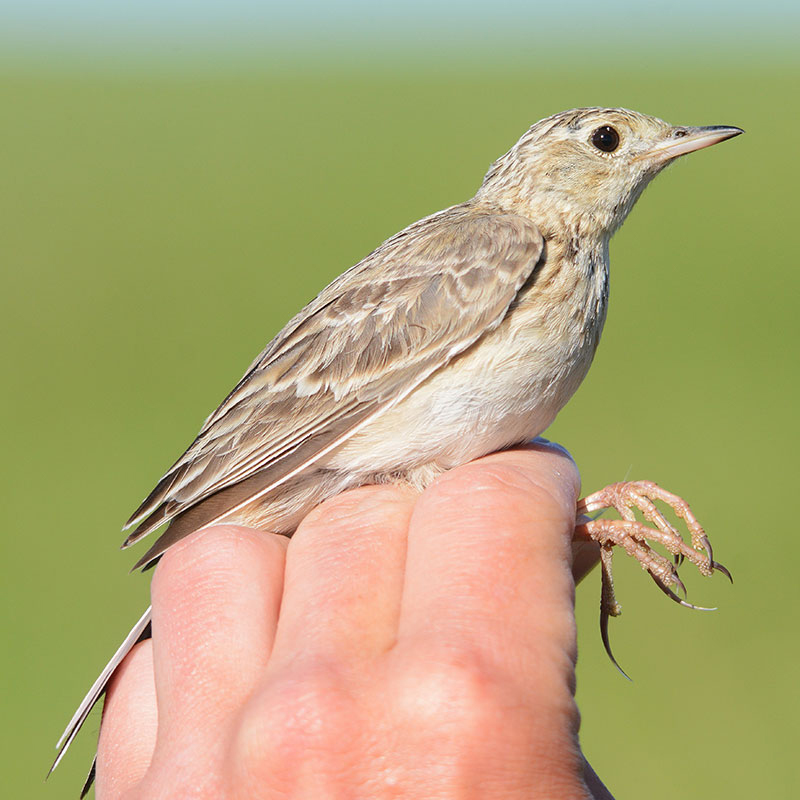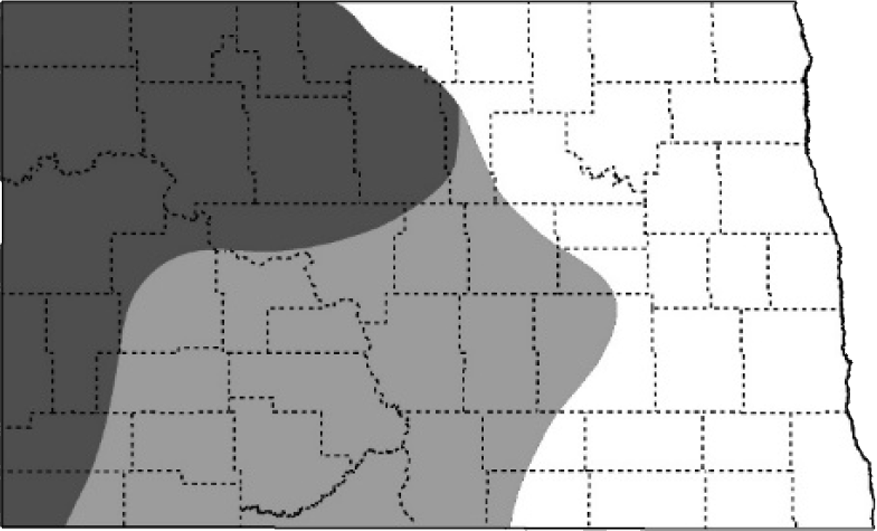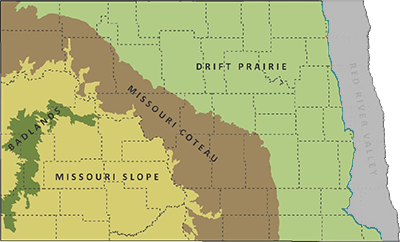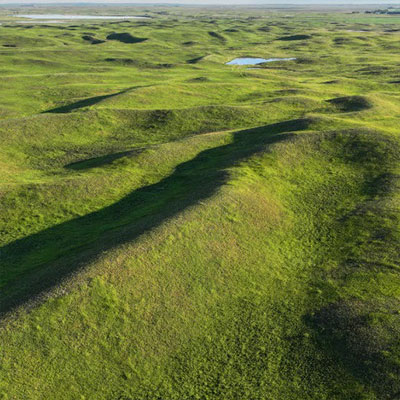Sprague’s Pipit

NDGF
L 6.5”, WS 10”, 0.88 oz. Slender, rather dull light brown, wears a “necklace” of fine streaks.
Status in North Dakota
Occurs in North Dakota from early April to mid-October. Two periods of breeding activity: 1) late April – early June; 2) mid-July to early September.
Reason for SWAP Designation
Regionally and globally imperiled, ND range important (SGCN a., b.).
ND ranks 2nd out of 3 states for highest percent of population (7.65%) during the breeding season (eBird).
The Sprague’s Pipit is declining precipitously, and the population has decreased 75% since 1970.
ND has high stewardship responsibility for this species.
Threats
Loss of grassland.
Degradation of grasslands from invasive plants, woody encroachment, succession, and loss of diversity.
Loss of ranching heritage and grass-based operations, grazing is essential to grassland health and diversity.
Loss of grassland on the wintering grounds in the Chihuahuan Desert.
Classified as climate-endangered, Sprague’s Pipit is projected to lose more than half of its current distribution by 2050, with no net gains of new areas (Audubon).
Direct and indirect impacts from energy development.
Research and Monitoring
Habitat requirements and demographic studies have been broadly researched on the breeding grounds.
Additional information is needed on migration and wintering behaviors.
The Breeding Bird Survey, eBird and Partners in Flight Databases are key sources of information on distribution and population trends.
Management Recommendations
- Protect and conserve large, intact tracks of native prairie/unbroken grassland.
- Reconstruct or restore grassland adjacent to existing tracts of native prairie/unbroken grassland.
- Use native grasses when replanting or restoring grassland.
- Promote well-managed grazing lands and working grasslands for biodiversity, sustainability, and resiliency.
- Prevent or remove shrubs and tall woody vegetation in grasslands, either mechanically or by prescribed fire.
- Delay mowing or haying until August 1.
- Avoid or minimize placement of development (e.g. energy, housing, utility lines) or other human infrastructure in native prairie/unbroken grassland.
- Follow beneficial or best practices during the design, siting, construction, operation, and maintenance of tall structures (e.g. transmission lines, communication towers, wind turbines).



